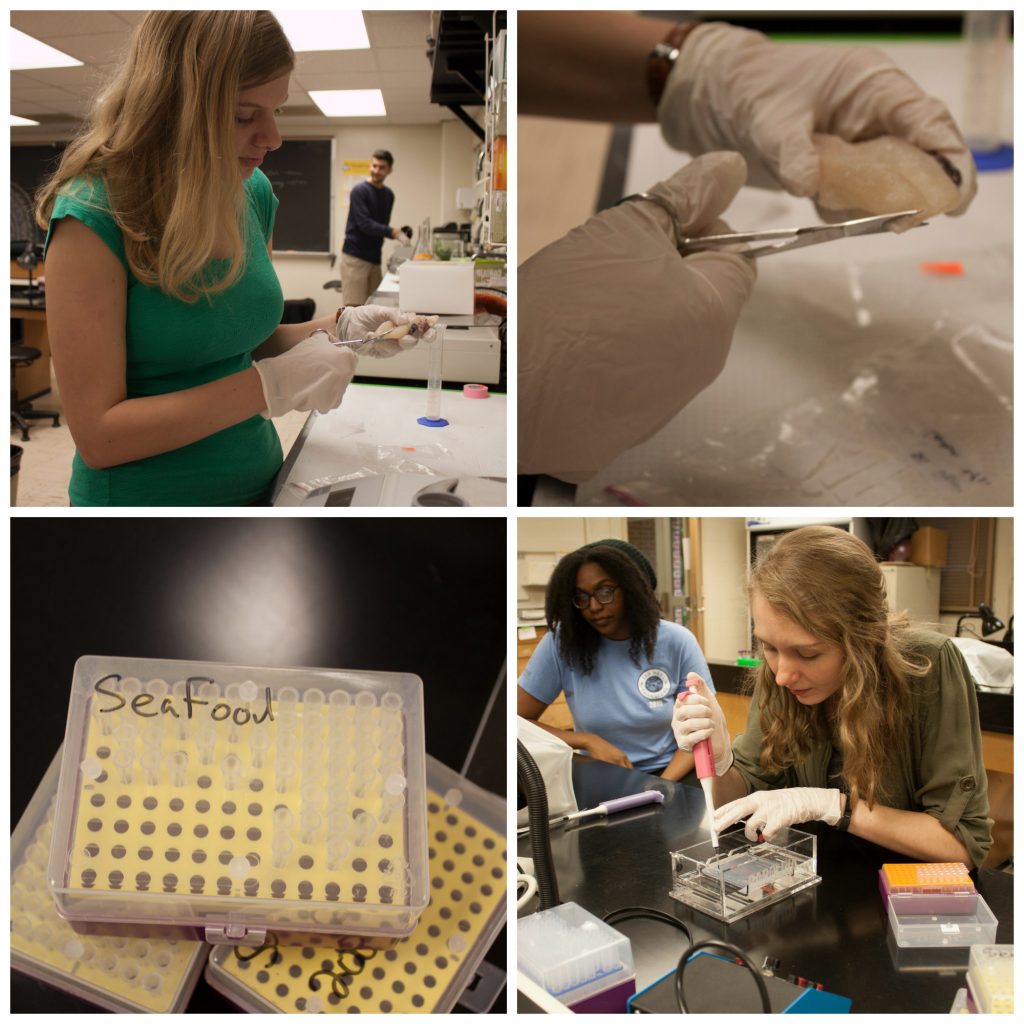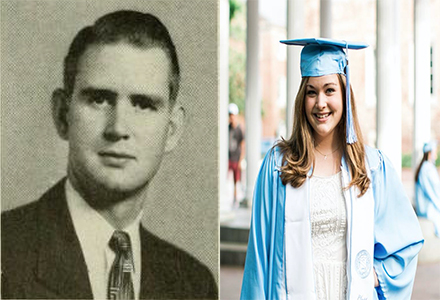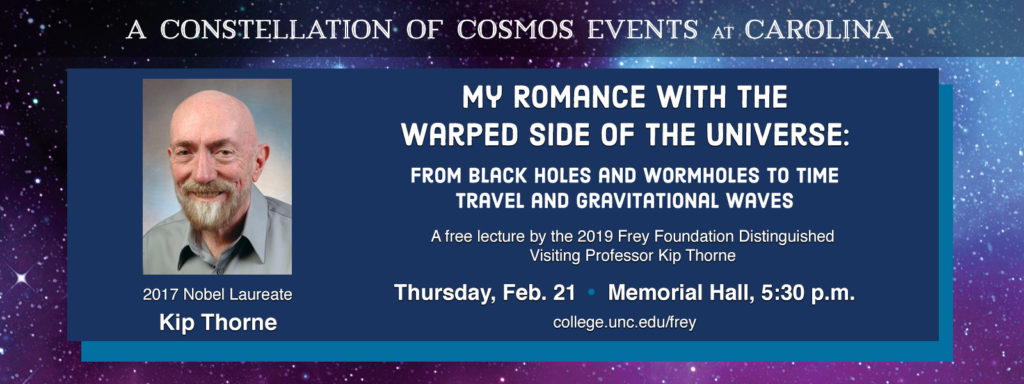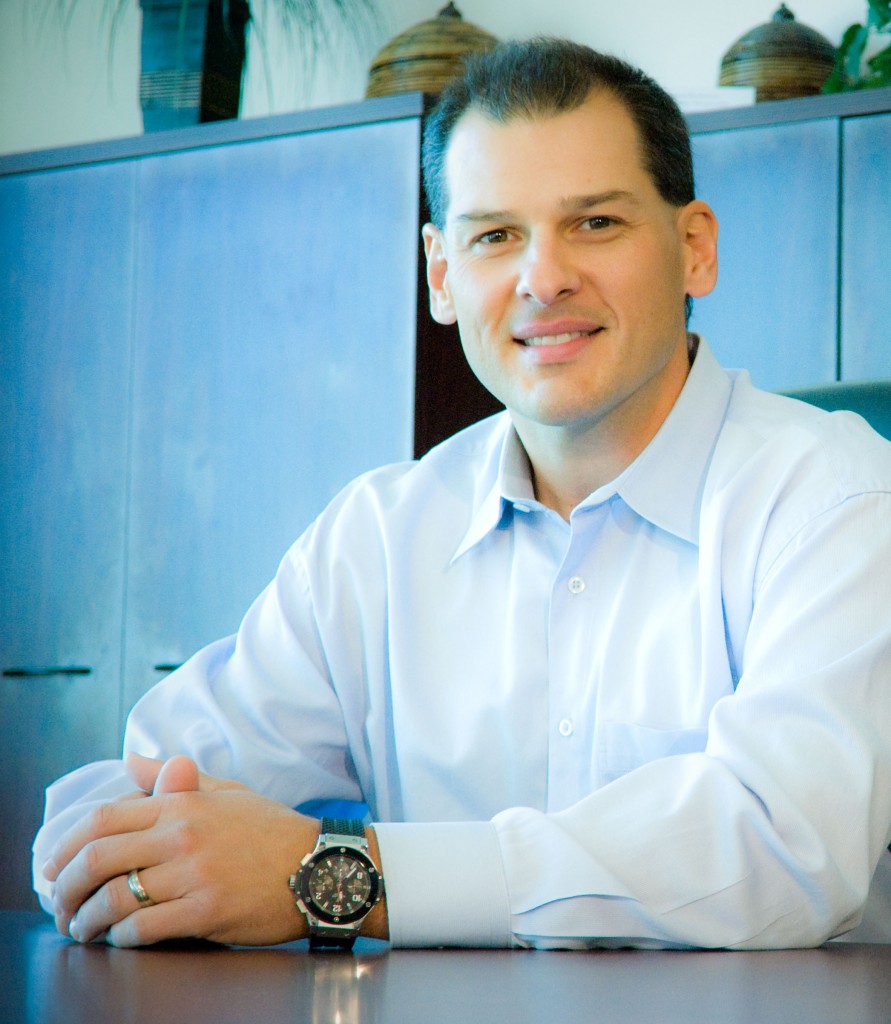
This spring, biologists John Bruno and Blaire Steinwand linked together molecular biology and marine ecology in their new course Seafood Forensics. Students set out to quantify seafood mislabeling using DNA barcoding technology and to discuss the impact that it has on human health and marine ecosystems.
For the pilot CURE (Course-related Undergraduate Research Experience) course, students were immersed in the real culture of science, characterized by scientific ways of thinking, behaving and working. Students designed projects based on novel questions, they learned from failure and they benefited from collaboration.
We recently talked to some students in the course about their experiences.
Q: What was the purpose of the Seafood Forensics course?
A: Mohit Chandi, sophomore biology major: This class was an introduction to research, where we learned the fundamentals of research, the protocols behind DNA extraction, and we used scientific methods to do an independent research project on seafood mislabeling. It’s been shown in literature and previous studies that seafood mislabeling is a huge problem in the U.S. and around the world. If you go to [a local grocery store], and you’re buying one type of fish, it might not be the type of fish you think it is.
Q: Why is the issue of seafood mislabeling important? How does this impact the consumer and the fisherman?
A: Kylie Lawrence, sophomore biology and chemistry major: A lot of the academic papers we read had to do with the social implications of seafood mislabeling, like in the seafood industry in Asia, for example. Basically they keep people on these boats for years at a time. Because they can take a while to get back to land, the fish they catch are of unknown origin. So when they’re sold to big companies, they can change it to whatever they want. So it’s really hard to determine sometimes where the point of mislabeling happens — whether it’s at the point where the fish is caught or when it’s bought by a big company or when it’s sold to a [grocery store or other food establishment.] It also comes down to health issues, for example, some fish have higher levels of mercury, and for pregnant women, that can be a big [concern].
Q: Can you walk us through the process of using DNA barcoding to determine the type of fish and whether or not it’s been mislabeled?
A: Liliya Veliko, junior biology major: After we get our samples, we take a piece of the actual tissue, and we separate the DNA from the proteins and other stuff in the cell that would get in the way. We use a special procedure to copy a certain part of the DNA millions of times. This particular gene, Co-1, is highly conserved across various types of fish, but it varies just enough that if we can find the differences in this gene, we can find what species it actually came from.
Q: What was something really surprising that you found out during the research process?
A: Chloe Brown, junior biology major: One thing was the fact that our research did not go in the direction that we thought it would. That added to the experience of being in this class because some of the labs that you take as an undergraduate are supplements to classes and they are very “controlled.” Our research was focused on the Chapel Hill area, and we were using chain and local restaurants as our source of fish, specifically fish tacos and tilapia. Our first protocol for extracting DNA wasn’t working very well. We aren’t sure why but it could have been due to the fact that the fish was cooked and not raw. … The surprise was ending up with little to work with in concluding our research. It was rewarding in that it opened everyone’s eyes to the reality and uncertainty of science.
Q: This was the pilot course in the CURE program. Why did you sign up for this particular course?
A: Holly Johnson, sophomore biology major: I’m a biology major and even though I’m pre-med, I’m really interested in research and I enjoy learning about marine science and marine ecology. It seemed interesting to be able to combine molecular biology with marine science.
Q: Is there anything that a consumer can do when buying fish to ensure that the fish is not mislabeled?
A: Joseph DelFerro, sophomore biology major: For the meat industry, it’s easier to know what you’re getting, but for the seafood industry, there’s not as much regulation. A lot of what we did in class in terms of future implications was examining how using DNA barcoding can be helpful for government organizations or regulatory organizations so they can better enforce mislabeling. But right now, there’s not that much regulation, and fish mislabeling is still a problem.
Q: Why is undergraduate research important; how did you benefit from this research-intensive course?
A: Claire Drysdale, sophomore biology and studio art major: Anyone who is seriously considering going into a scientific field should have the opportunity to do research because when you’re in a big lecture-style course and all you’re doing is learning content and then taking tests, you’re not really getting at what science is. Science is very dynamic — it’s about creativity, it’s about problem-solving, and above all, it’s about failure, and trying to work around that failure.
Photos and interviews by Kim Weaver Spurr ’88




